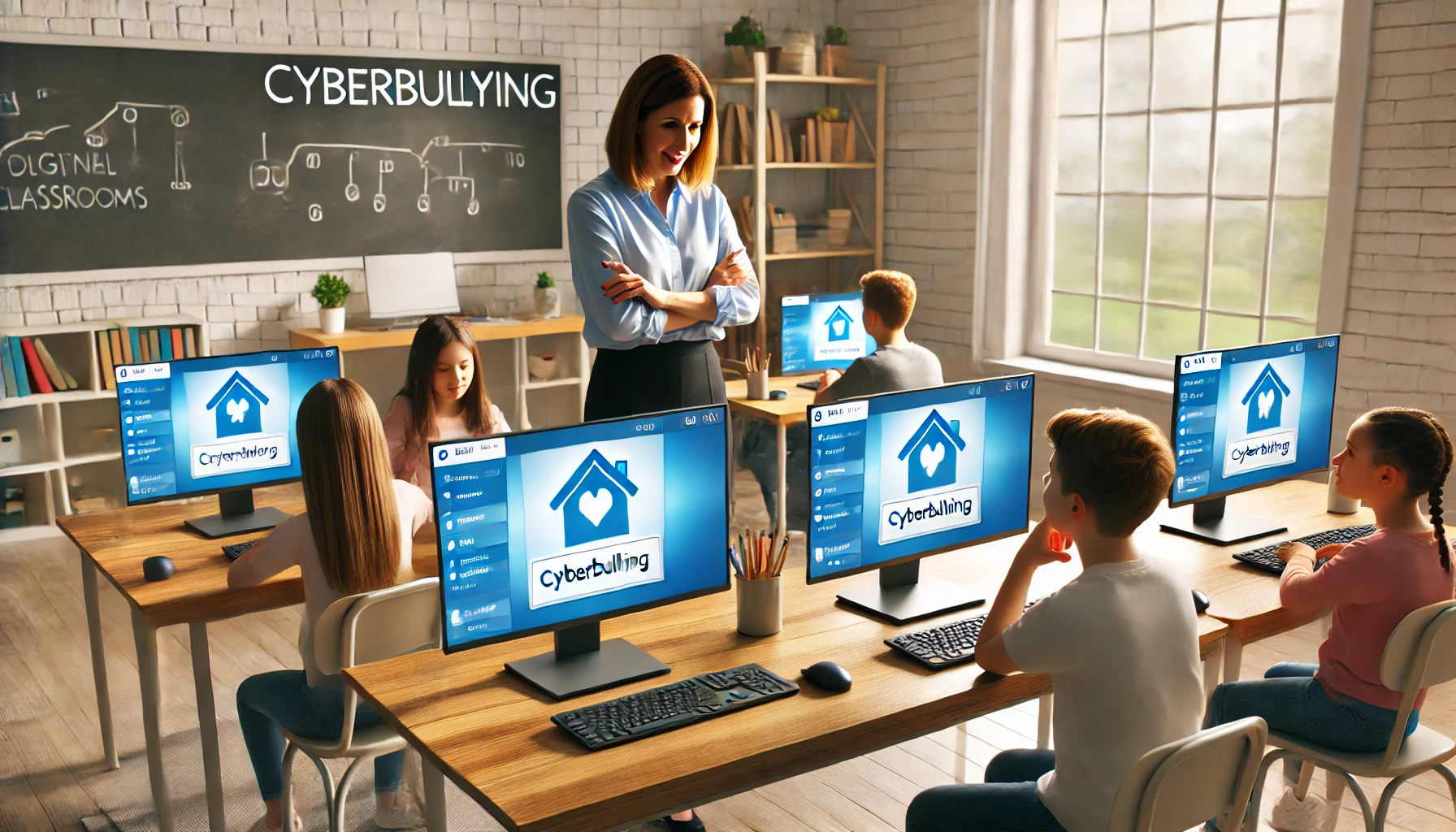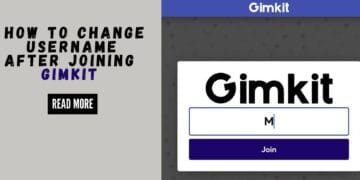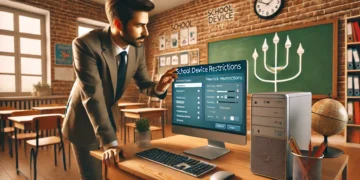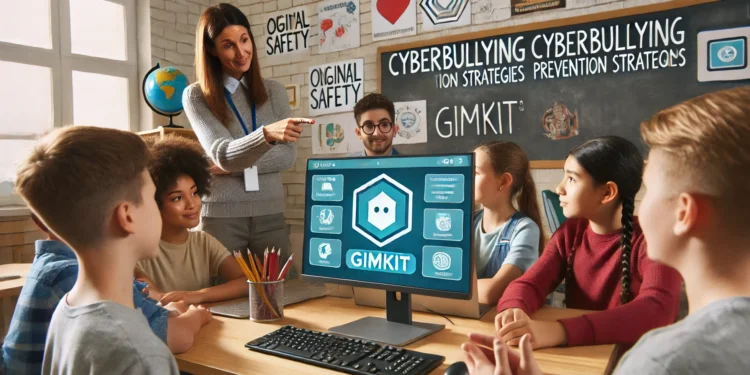The most effective way to address Gimkit cyberbullying prevention is by implementing a strong Gimkit and Digital Citizenship program focusing on in-game and out-of-game interactions. Since Gimkit has limited direct chat, teachers should prioritize screen name safety, proactively teach upstander behavior using interactive scenarios, and integrate cyberbullying prevention classroom activities that leverage Gimkit’s cooperative modes to promote positive online etiquette.
The Urgent Need for Digital Citizenship Education in EdTech
The digital classroom is a double-edged sword: it offers incredible engagement through tools like Gimkit, but it also extends the reach of bullying. The issue of cyberbullying is no longer a fringe concern; the Cyberbullying Research Center reports that over 30% of teens have experienced cyberbullying at some point in their lives, underscoring the critical need for proactive intervention.
This guide goes beyond basic rules. It provides a comprehensive strategy for teachers and administrators to integrate robust cyberbullying prevention lessons directly into their technology use, ensuring Gimkit remains a safe, fun, and responsible learning environment. We’ll show you how to use your favorite gamified tool as a platform for teaching responsible technology use. For a broader context on creating a secure learning environment, consider these insights on safe kid games available today.
1. Understanding the Landscape: Where Cyberbullying Hides in Game-Based Learning
Many EdTech tools, including the standard Gimkit game modes, deliberately limit direct, open-ended chat, which is excellent for basic Gimkit classroom safety settings. However, sophisticated bullying adapts to any platform. A proactive approach means understanding the hidden avenues of harm.

The Unique Manifestations of Online Harassment in Gimkit
As educators, we must teach students that their digital footprint is permanent, and behavior in a platform like Gimkit—even via a seemingly innocuous screen name—contributes to their overall online reputation. When addressing student misuse, it’s helpful to understand the difference between healthy competition and violating the principles of responsible technology use altogether.
Crucial Statistics for Educator Awareness
To emphasize this strategy, consider the following statistics:
- Exclusion is Key: One of the most prevalent forms of cyberbullying is intentional exclusion from a group chat (reported by over two-thirds of victims), which can translate to intentional exclusion from forming a team in EdTech tools.
- Affect on Learning: 64% of victims report that being cyberbullied affects their ability to learn and feel safe at school. Prevention is not just a safety measure; it’s an academic necessity.
2. The Policy Foundation: Establishing EdTech Safety Guidelines
The core of effective cyberbullying prevention is a clear, consistently enforced Acceptable Use Policy (AUP) and a high-quality digital citizenship education curriculum. This is where school administrators and teachers unite, backed by a strong knowledge of what are the main features of Gimkit.

A. Developing an EdTech-Specific AUP (Acceptable Use Policy)
Your policy must explicitly cover EdTech tools like Gimkit. Use this checklist as a starting point to align with ISTE Standards for Digital Citizen:
- Mandatory Screen Name Safety Protocol: All student usernames/avatars must be approved by the teacher/district. They must be school-appropriate, non-identifying, and non-derogatory. This directly addresses the potential for anonymous participation harm. Setting clear expectations for funny Gimkit names is part of this protocol.
- Zero-Tolerance for Digital-Physical Spillover: Clearly state that online behavior—even if initiated by a Gimkit game—that affects a student’s well-being in the physical classroom is considered bullying and will be subject to disciplinary action.
- Digital Property & Copyright: Explicitly cover the sharing of screenshots or recording of game-related content (e.g., sharing a mean-spirited screenshot of a leaderboard on social media).
- Reporting Mechanisms: Provide a simple, private way for students to report incidents immediately, ensuring they know they will not lose their internet access for speaking up.
B. Integrating ISTE’s Digital Citizenship Competencies
Effective digital citizenship education moves beyond simple rules (the “don’ts”) to focus on positive action (the “do’s”). The ISTE DigCitCommit campaign emphasizes five core competencies that can be taught using Gimkit:
3. Cyberbullying Prevention Classroom Activities with Gimkit
The most helpful content provides concrete, ready-to-use strategies. Here are actionable, lesson-plan-ready ideas for teachers to promote a positive digital footprint using Gimkit.
 Activity 1: The Upstander Scenario Challenge
Activity 1: The Upstander Scenario Challenge
- Objective: To teach upstander behavior and bystander intervention.
- Gimkit Setup: Create a Kit titled “Digital Dilemmas: Upstander Edition.”
- Question Format: Use scenario-based questions:
- Scenario: “You see a student post a mean comment about another student’s Gimkit score on social media. What is the best first step you should take?”
- Answer Choices: A) Ignore it; B) Post a mean comment back; C) Privately report the incident to a trusted adult (Correct); D) Tell the victim to delete their account.
- In-Class Follow-up: After the game, run a “Restorative Circle” discussion using the hardest questions. Focus on the value of being a helpful, kind communicator and the difference between an upstander and a passive bystander. For further pedagogical advice, see how to incorporate Gimkit for Social Emotional Learning (SEL).
Activity 2: The Netiquette Naming Convention
- Objective: To ensure screen name safety and promote online etiquette.
- Lesson: Before the game, teach a mini-lesson on netiquette. Define what a positive and a negative digital identifier looks like. Provide clear, non-negotiable guidelines for Gimkit screen name safety.
- Gimkit Setup: Play a quick
Classic Modegame focused on course material. Before starting, the teacher must visually inspect every student’s entered screen name on the live join screen. Any inappropriate name is immediately sent to the Gimkit Join Code screen with a request to change. This is a critical Gimkit classroom management strategy. - Extension: Have students write their own personal digital citizenship pledge that includes a promise to use respectful screen name safety.
Activity 3: Data & Empathy Mapping (Middle/High School)
- Objective: To demonstrate the real-world impact of online actions and promote empathy online.
- Lesson: Introduce Cyberbullying Research Center statistics, focusing on the emotional toll (depression, anxiety, low self-esteem). Use a Mind Map to track the consequences of a single negative online interaction (e.g., a mean team name).
- Gimkit Setup: Play a
Trust No OneorTagmode, which encourages a complex, high-stakes environment. Exploring Gimkit’s game modes will help you choose the best fit for this lesson. - Post-Game Reflection: Facilitate a discussion on the pressure and feelings involved in the game. Ask: “How did it feel to be targeted? What’s the difference between competitive strategy and personal attack?” This is a subtle but powerful way to teach responsible use of educational technology and distinguish between game behavior and true harm.
4. Teacher Strategies for Proactive Gimkit Online Safety
Even with a strong curriculum, the teacher’s daily monitoring is non-negotiable. This high-level oversight is crucial to strong Gimkit classroom management.
Strategy 1: Leveraging Gimkit’s Design Limitations
- Advantage of No Chat: The lack of open chat during regular Gimkit games is a significant benefit for Gimkit cyberbullying prevention. Capitalize on this by strictly enforcing policies against using external messaging apps (like Discord or text) during class to discuss the game.
- The Power of Anonymity (Use Sparingly): In some sensitive discussions about cyberbullying, a one-time use of a tool that allows fully anonymous responses (like a simple Google Form or a different tool entirely) before the Gimkit game can help gather honest data about existing problems without forcing students to expose themselves.
Strategy 2: Model Positive Digital Citizenship Yourself
Always model the kind communication you expect:
- Public Acknowledgment: Praise students publicly for exemplary upstander behavior (e.g., “I noticed Sarah helped a teammate understand the question—that’s great online etiquette!”). You can reinforce this with positive Gimkit teamwork strategies.
- Private Correction: Address issues with usernames or team names privately and immediately. Never embarrass a student in front of the class, as this undermines the goal of a Gimkit safe classroom environment.
- Transparency: Be open about your school’s reporting mechanisms and response protocols. Students need to trust that when they report something, a clear, fair process will follow.
Strategy 3: Policy Alignment & Policy Enforcement
For administrators and tech leads, the final step is ensuring all EdTech tools work with Gimkit under a unified safety umbrella. Review and update your existing rules to specifically include digital interactions. Follow the school’s official anti-bullying rules for any reported incident, reinforcing the seriousness of the issue.
Conclusion: Making Gimkit a Platform for Responsible Technology Use
Gimkit is an incredible tool for engagement, but its success as a learning platform is entirely dependent on its safety. Achieving robust Gimkit cyberbullying prevention requires a commitment to Gimkit and Digital Citizenship that is comprehensive, proactive, and engaging.
By implementing these actionable cyberbullying prevention classroom activities, enforcing clear EdTech safety guidelines, and modeling positive digital footprint behavior, you empower students to become not just good players, but good digital citizens.
Remember, every student deserves a Gimkit safe classroom environment where they can focus on learning and fun without fear.
Frequently Asked Questions (FAQs)
Q1: Does Gimkit have specific anti-cyberbullying features?
Gimkit’s standard game modes lack an open, direct chat feature, which is a key structural advantage for Gimkit cyberbullying prevention as it significantly reduces opportunities for real-time, text-based harassment inside the game itself. The platform is designed to focus on quick answers and competitive gaming, rather than social messaging. Understanding what are the main features of Gimkit helps in leveraging these limitations as safety tools.
Q2: What is the most common sign of cyberbullying related to in-class games?
The most common signs are often behavioral, not digital. If a student who previously enjoyed Gimkit suddenly protests playing, avoids group work, or becomes withdrawn when the game is mentioned, it can be a sign that Gimkit online safety has been compromised, likely through out-of-game harassment or exclusion. Teachers should also look for persistent, inappropriate screen name safety violations or mean-spirited team names.
Q3: What are the three essential classroom rules for online safety that I can implement when using Gimkit?
The three most effective rules for ensuring Gimkit online safety are:
- Identity Rule: Use only approved, non-identifying, and non-derogatory screen names (Gimkit screen name safety).
- Upstander Rule: If you see something mean, hurtful, or exclusionary, privately report it to a trusted adult immediately (Upstander Behavior).
- Respect Rule: Treat others’ performance, in-game actions, and comments with respectful interaction and online etiquette.
Q4: How can teachers use Gimkit to teach digital citizenship?
Teachers can use Gimkit to create engaging cyberbullying prevention classroom activities that quiz students on digital citizenship education topics. For example, a kit can present scenarios about positive digital footprint choices, defining netiquette, or identifying which actions qualify as cyberbullying versus normal competition. This approach makes teaching responsible technology use interactive and memorable, and aligns with the goals of Gimkit for Social Emotional Learning (SEL).

























 Activity 1: The Upstander Scenario Challenge
Activity 1: The Upstander Scenario Challenge




